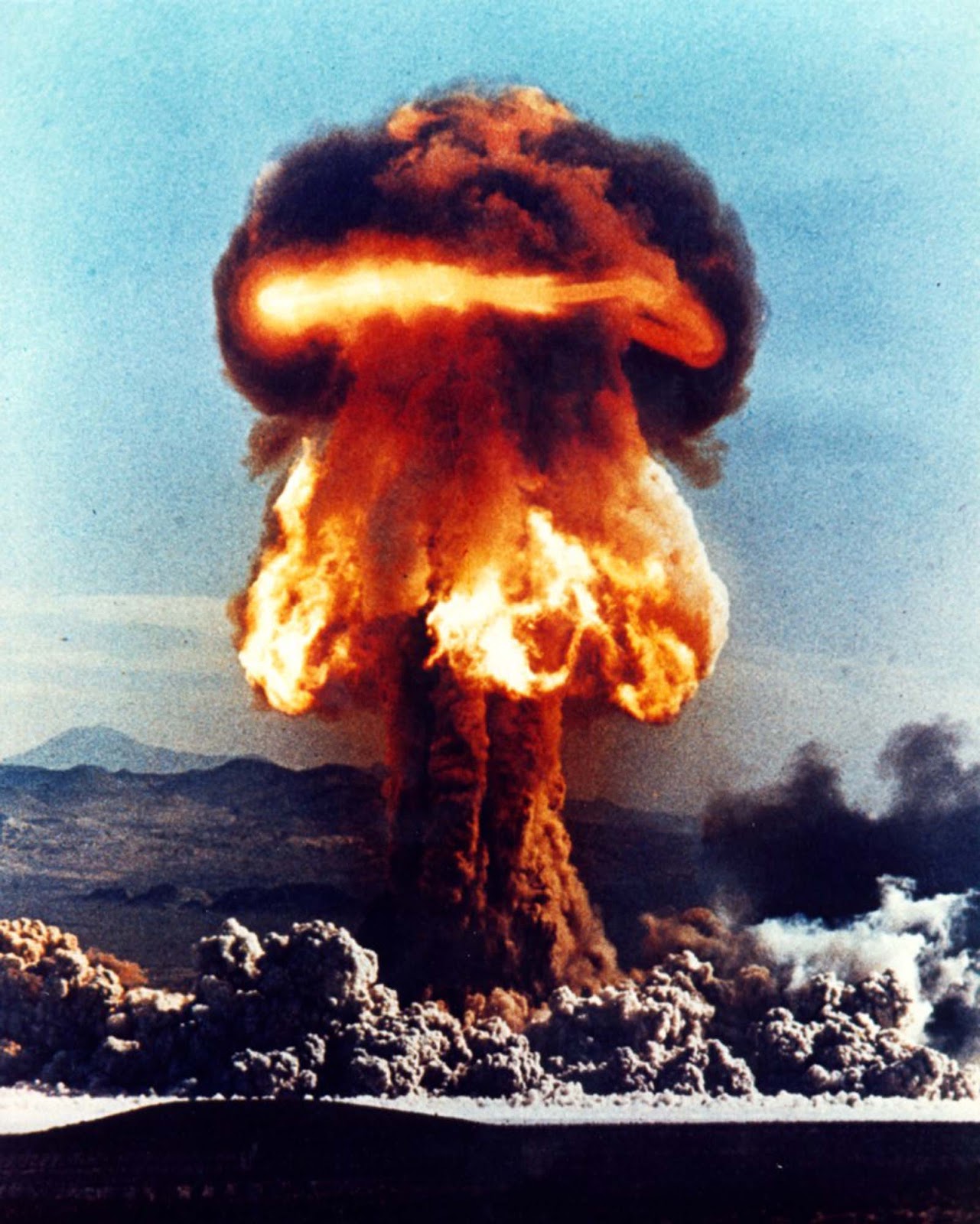Picatinny Arsenal was tasked to create a nuclear-capable artillery piece in 1949. Robert Schwartz, the engineer who created the preliminary designs, came up with a design that borrowed heavily from the German’s Krupp-made K5 11-inch railway guns, but modified to be moved on roads by a pair of huge tractors. This gun, labeled the M65, wound up being the largest road-mobile artillery the US ever put into production at some 84 feet long (26 m), and a total weight of 83-tons. The 38.5-foot long barrel (12m) had a 280mm bore, some 11-inches across. The gun was nicknamed Atomic Annie (likely derives from the nickname “Anzio Annie” given to the German K5 gun which was employed against the American landings in Italy.) The design was approved by the Pentagon. A three-year developmental effort followed. The project proceeded quickly enough to produce a demonstration model to participate in Dwight Eisenhower’s inaugural parade in January 1953. On May 25, 1953, at 8:30 am, the Atomic Annie cannon was tested at the Nevada Test Site (specifically Frenchman Flat) as part of the Upshot-Knothole series of nuclear tests. The test was codenamed “Grable” – because the letter Grable is phonetic for G, as in “gun”, since the warhead was a gun-type fission weapon. The detonation of Grable occurred 19 seconds after its firing. It detonated over 6.25 mi (over 10 km) away from the gun it was fired from. The explosion was an air burst of 160 m (524 ft) above the ground, 26 m (87 ft) west and 41 m (136 ft) south of its target (slightly uprange). Its yield was estimated at 15 kilotons, around the same level as Little Boy. An anomalous feature of the blast was the formation of a precursor, a second shock front ahead of the incident wave. This precursor was formed when the shock wave reflected off the ground and surpassed the incident wave and Mach stem due to a heated ground air layer and the low burst height. It resulted in a lower overpressure, but higher overall dynamic pressure, which inflicted much more damage on drag sensitive targets such as jeeps and personnel carriers. The test remains the only nuclear artillery shell ever actually fired in the U.S. nuclear weapons test program. About 3,200 soldiers and civilians were present. The explosion was recorded for military purposes (check the video below). The round (the W9 warhead) was 11 inches wide (28 cm), 55 inches long (138 cm) and weighed 803 pounds (365 kg). It used 110 pounds (50 kg) of enriched weapons grade uranium, arranged in an advanced ring and bullet system that collided when fired and set the device on a 15-kiloton chain reaction by the time it hit the target. The W9 units which were retired in 1957 were recycled into lower yield T-4 Atomic Demolition Munitions. These were the first (semi) man-portable nuclear weapons. After the successful test, there were at least 20 of the cannons manufactured at Watervliet and Watertown Arsenals, at a cost of $800,000 each. They were deployed overseas to Europe and Korea, often continuously shifted around to avoid being detected and targeted by opposing forces. Due to the size of the apparatus, their limited range, the development of nuclear shells compatible with existing artillery pieces (the W48 for the 155mm and the W33 for the 203mm), and the development of rocket and missile-based nuclear artillery, the M65 was effectively obsolete soon after it was deployed. However, it remained a prestige weapon and was not retired until 1963. (Photo credit: US Army Archives). Notify me of new posts by email.
Δ Subscribe



